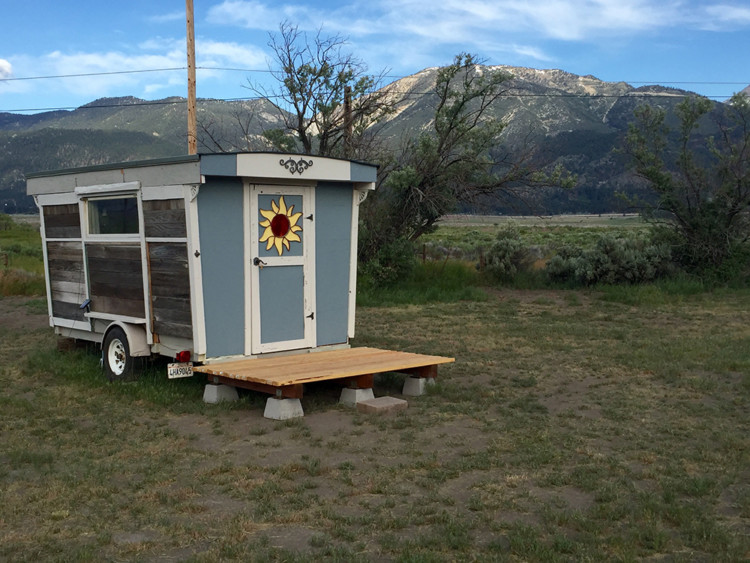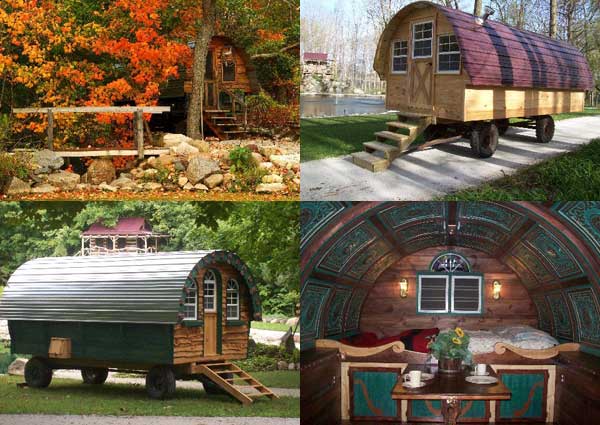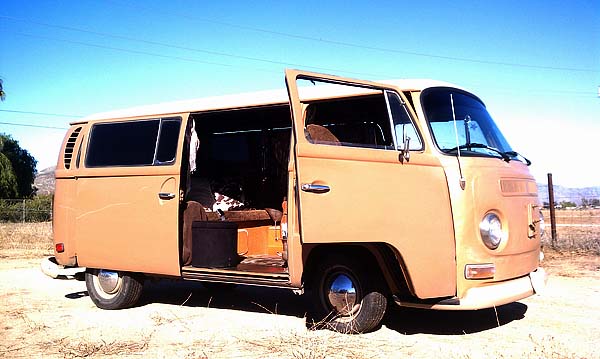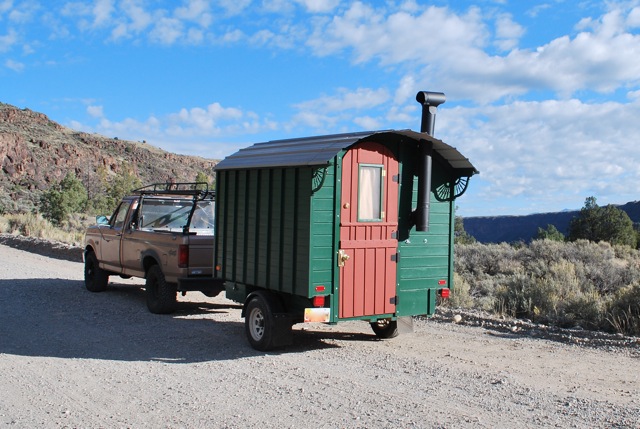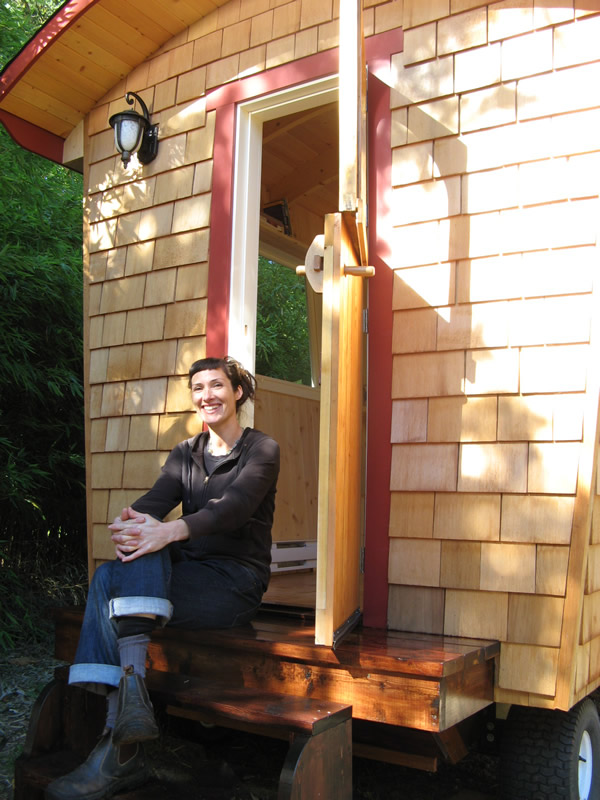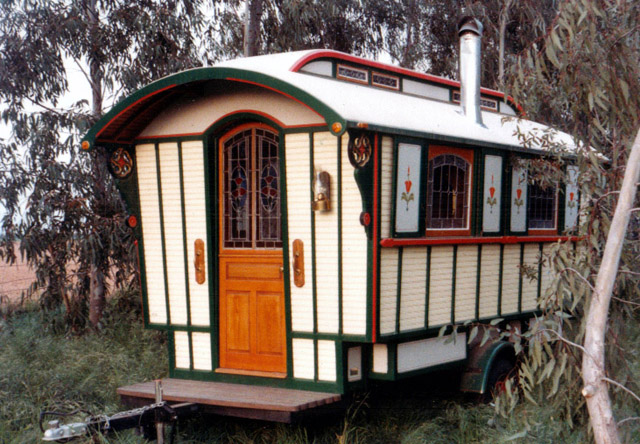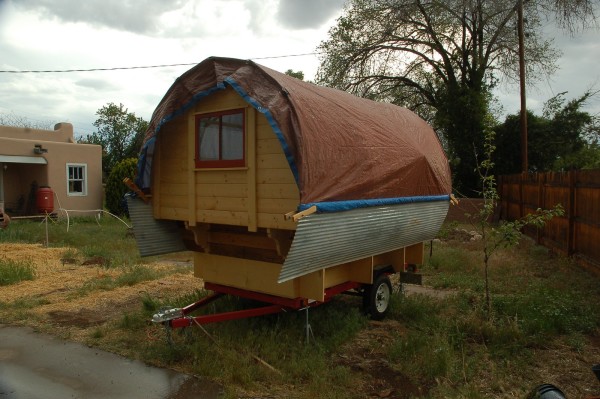Darrel Schultz is building a light towable gypsy wagon. The floor is 12 feet long and 54 inches wide. The roof overhangs each end by about 16 inches.
It’s totally scratch-built from the fram up, as the pictures show. I used a Dexter torsion-bar axle with electric brakes. Darrel likes keeping things simple, so there will be no electrical system other than the trailer lighting. The lights on the inside are gas, exactly as were used on early airstream trailers.

Darrel will be using a wood-burning stove (a ” Lil Sweetie” boxwood stove from Vogelzang.) for heat. Darrel is building it to camp in, because his Teardrop that he built doesn’t hold three people. He won’t have the interior finished, but he hopes to have the exterior complete enough by late summer for a trip to Yellowstone.
